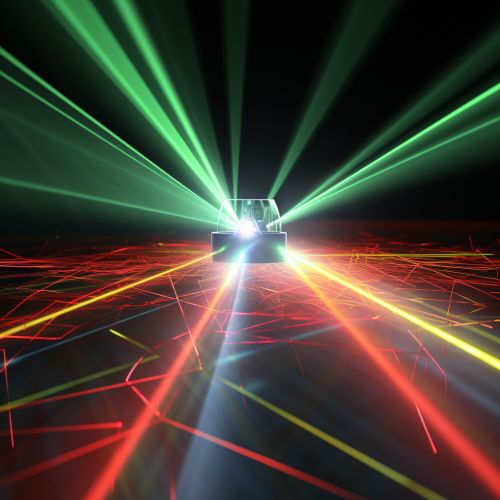Parametric Down-Conversion
Introduction
Parametric down-conversion (PDC) is a quantum mechanical process that involves the conversion of a photon from a pump laser into a pair of lower-energy photons, referred to as signal and idler photons. This process is facilitated by a nonlinear optical medium and is a fundamental concept in the field of quantum optics.


Nonlinear Optics
In nonlinear optics, the response of a material to an applied electric field is not proportional to the field itself. This is in contrast to linear optics, where the response is directly proportional to the field. Nonlinear optical processes, such as PDC, are essential for the generation and manipulation of quantum states of light.
Process of Parametric Down-Conversion
The process of PDC begins with a high-energy photon, typically from a laser, entering a nonlinear optical medium. This photon is then converted into two lower-energy photons. The energy conservation law ensures that the total energy of the two output photons equals the energy of the input photon. This is expressed as:
ωp = ωs + ωi
where ωp is the frequency of the pump photon, and ωs and ωi are the frequencies of the signal and idler photons, respectively.
Similarly, momentum conservation (or phase matching) must also be satisfied in the process. This is expressed as:
kp = ks + ki
where kp is the wave vector of the pump photon, and ks and ki are the wave vectors of the signal and idler photons, respectively.
Types of Parametric Down-Conversion
There are two types of PDC: type-I and type-II. In type-I PDC, the signal and idler photons have the same polarization. In contrast, in type-II PDC, the signal and idler photons have orthogonal polarizations.
Quantum Entanglement
One of the most intriguing aspects of PDC is that it can produce pairs of entangled photons. Entangled photons exhibit correlations in their properties that cannot be explained by classical physics. This phenomenon has been used to test the fundamental principles of quantum mechanics and is also the basis for emerging technologies such as quantum cryptography and quantum computing.
Applications
PDC is used in a variety of scientific and technological applications. These include quantum information processing, quantum cryptography, quantum metrology, and tests of quantum mechanics. In addition, PDC is a valuable tool in the laboratory for generating single photons and entangled photon pairs.
